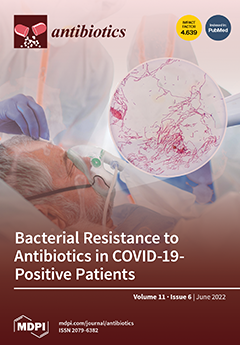Background:Staphylococcus aureus bloodstream infection (SA-BSI) causes morbidity and mortality. We established a management protocol for patients with SA-BSI aimed at improving quality of care and patient outcomes.
Methods: A retrospective pre–post intervention study was conducted at Maharaj Nakorn Chiang Mai Hospital from 1 October 2019 to 30 September 2020 in the pre-intervention period and from 1 November 2020 to 31 October 2021 in the post-intervention period.
Results: Of the 169 patients enrolled, 88 were in the pre-intervention and 81 were in the post-intervention periods. There were similar demographic characteristics between the two periods. In the post-intervention period, evaluations for metastatic infections were performed more frequently, e.g., echocardiography (70.5% vs. 91.4%,
p = 0.001). The appropriateness of antibiotic prescription was higher in the post-intervention period (42% vs. 81.5%,
p < 0.001). The factors associated with the appropriateness of antibiotic prescription were ID consultation (OR 15.5; 95% CI = 5.9–40.8,
p < 0.001), being in the post-intervention period (OR 9.4; 95% CI: 3.5–25.1,
p < 0.001), and thorough investigations for metastatic infection foci (OR 7.2; 95% CI 2.1–25.2,
p = 0.002). However, the 90-day mortality was not different (34.1% and 27.2% in the pre- and post-intervention periods, respectively). The factors associated with mortality from the multivariate analysis were the presence of alteration of consciousness (OR 11.24; 95% CI: 3.96–31.92,
p < 0.001), having a malignancy (OR 6.64; 95% CI: 1.83–24.00,
p = 0.004), hypoalbuminemia (OR 5.23; 95% CI: 1.71–16.02,
p = 0.004), and having a respiratory tract infection (OR 5.07; 95% CI: 1.53–16.84,
p = 0.008). Source control was the only factor that reduced the risk of death (OR 0.08; 95% CI: 0.01–0.53,
p = 0.009).
Conclusion: One-third of patients died. Hospital-wide protocol implementation significantly improved the quality of care. However, the mortality rate did not decrease.
Full article






